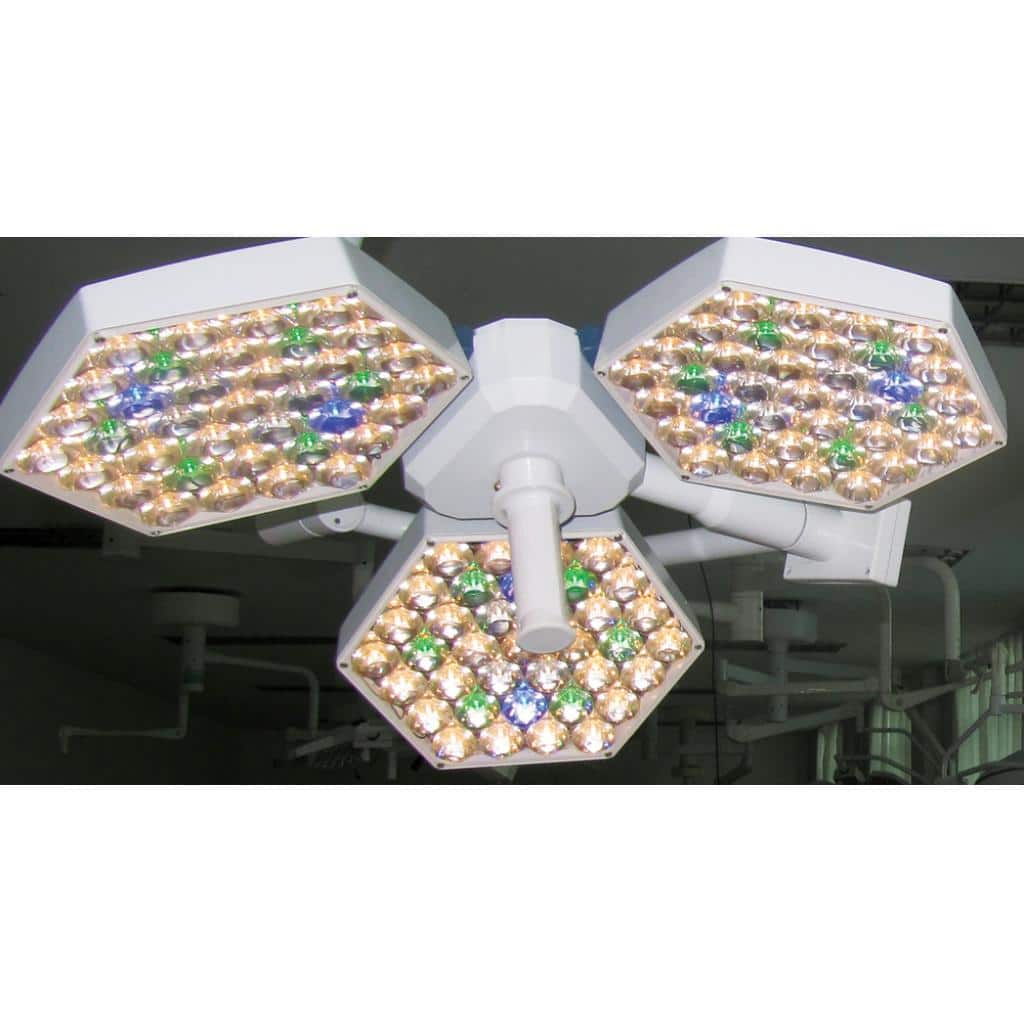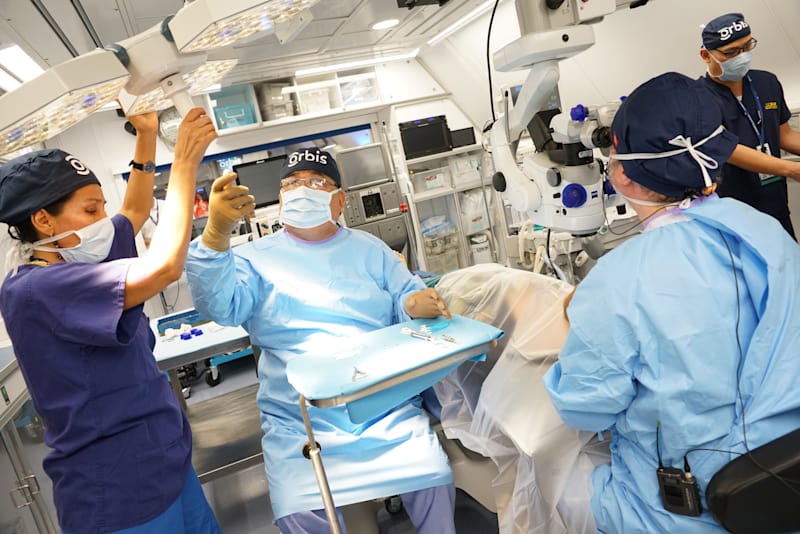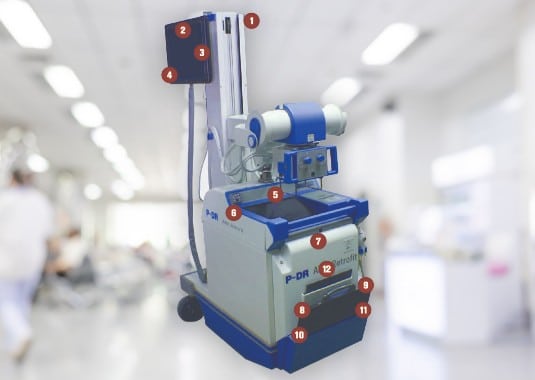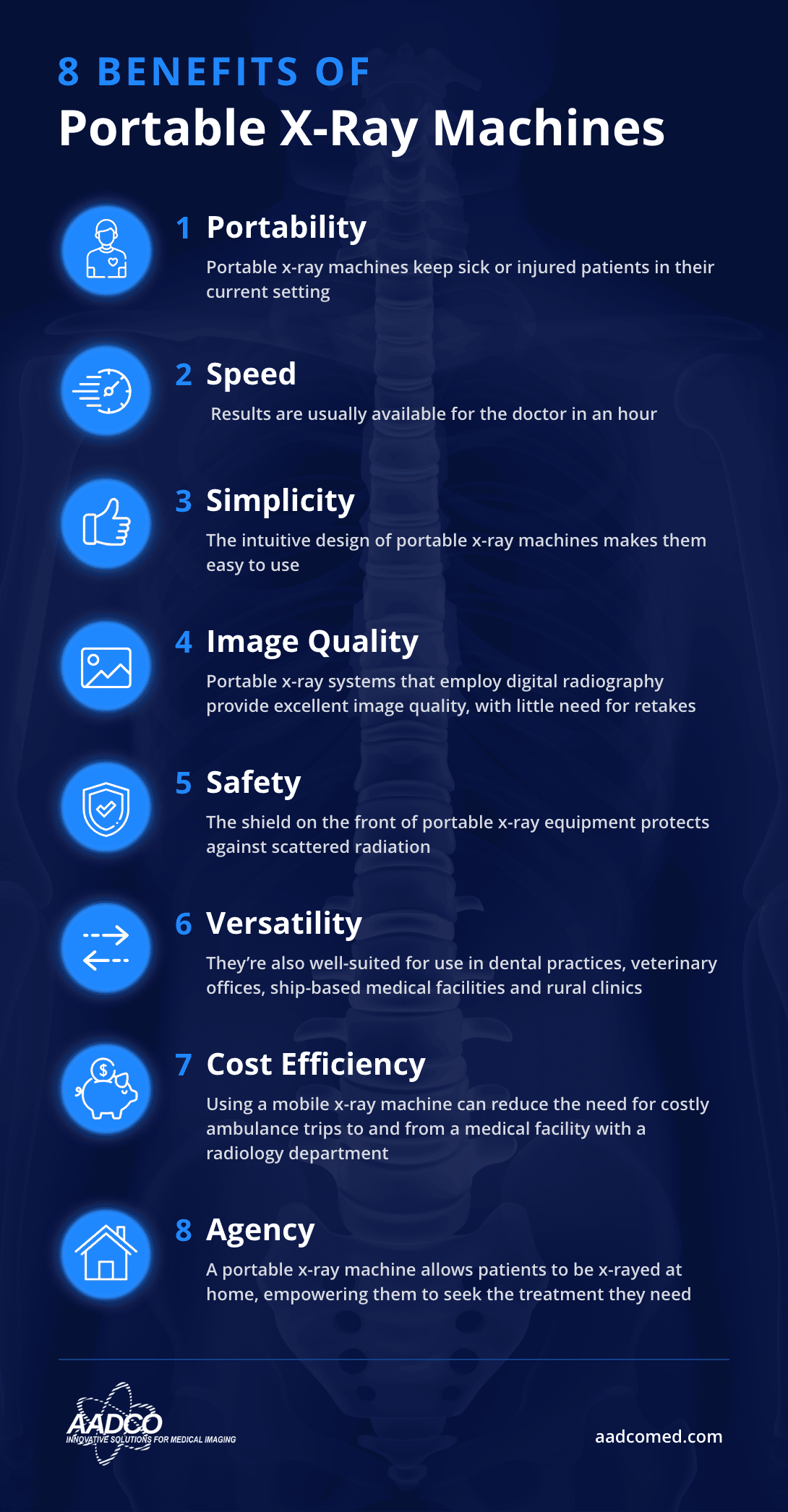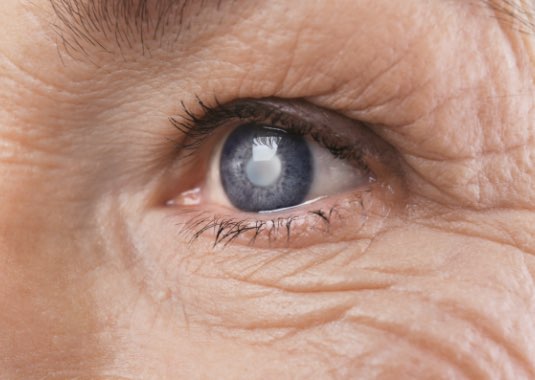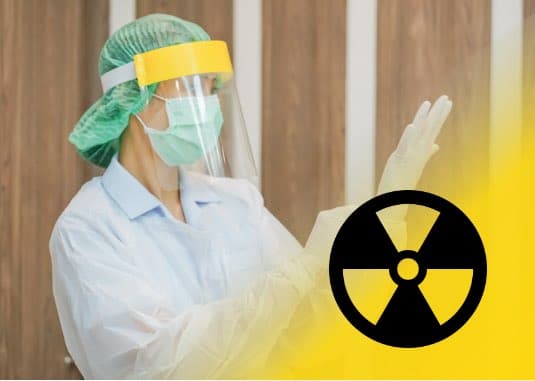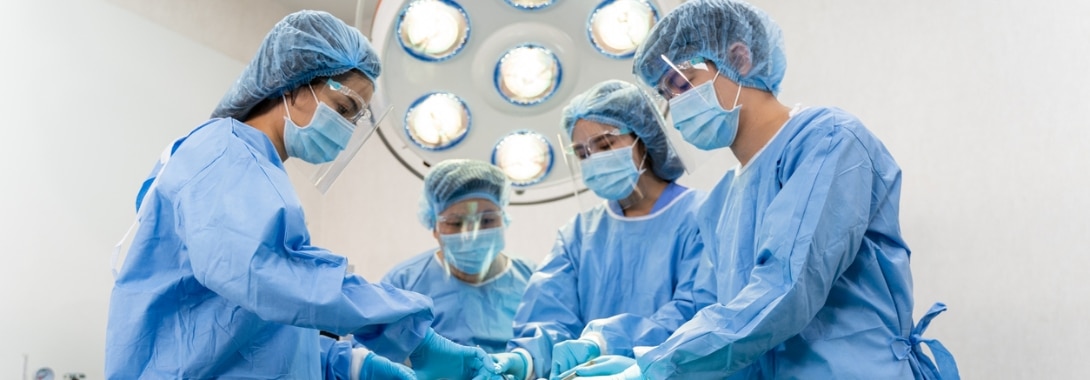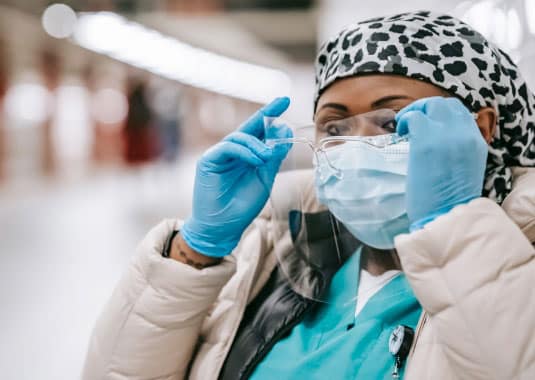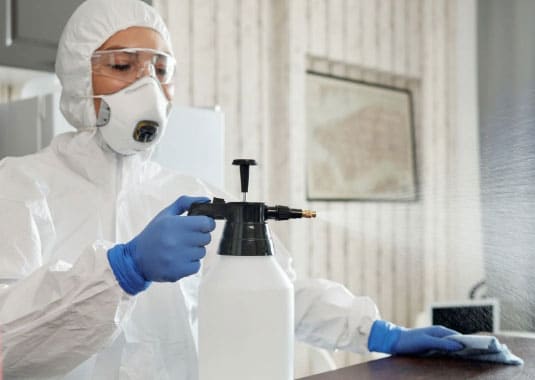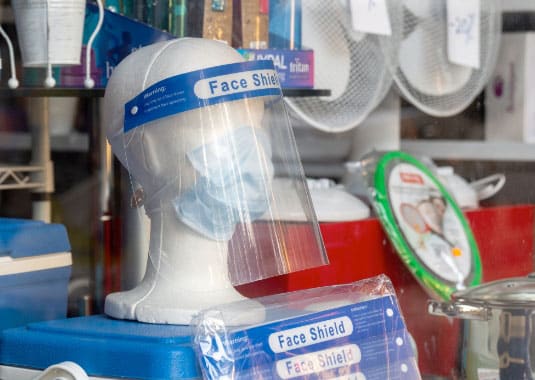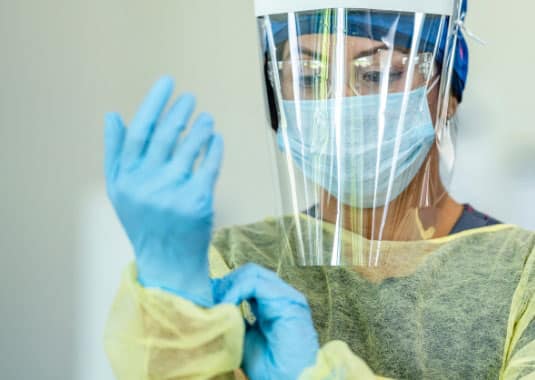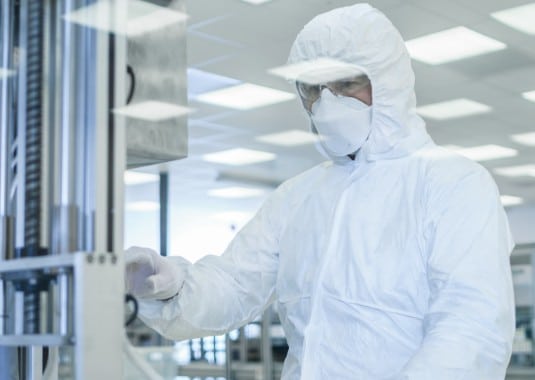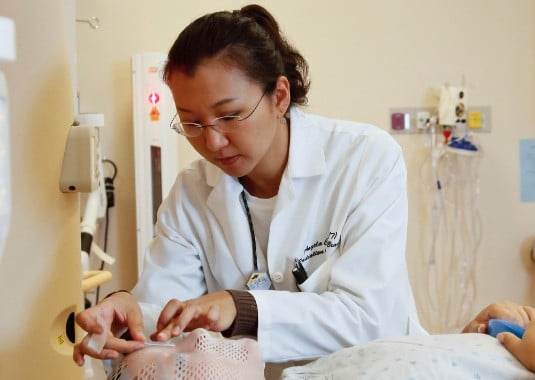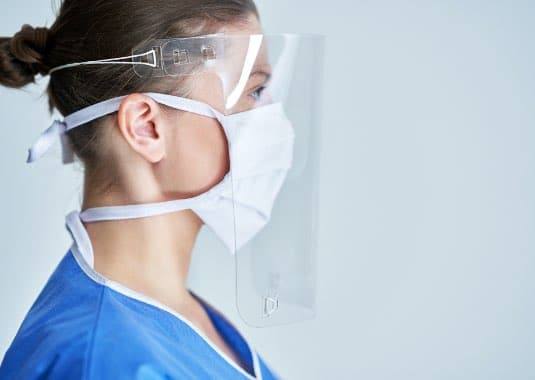We’re living in unprecedented times where Covid-19 has established its roots globally.
Providing enough quality PPE for health workers amidst this pandemic is something all countries worldwide strive to achieve. The safety of our frontline health workers as they work to control these infections is a priority.
Read on to learn more about the importance of infection control precautions, different types of PPE and best practices in the use of personal protective equipment in healthcare.
What Exactly Is PPE in Healthcare?
Personal protective equipment (PPE) is protective gear, clothing, goggles, helmets, or other equipment or garments, worn for protection against diseases, or injuries.
Standard precautions in healthcare include creating a wall of protection against bacterial/viral infections, and body fluids during patient care. Using these precautions protects an individual’s skin, eyes, nose, or mouth from infection.
Healthcare workers and other professionals use infection control practices to reduce the risk of infection in healthcare settings. This prevention strategy can be used in conjunction with other measures such as hand washing and meticulous cleaning. The following guide will provide information on PPE for infection control precautions, including what it is and why it’s important.
Types of Personal Protective Equipment
There are several types of PPE available for use in infection control. When sourcing PPE from suppliers, they should be able to provide you with all supporting documentation and certification information on each specialized item you need.
Health experts recommend involving potential PPE end users in the equipment selection process. It is also recommended, where possible, to provide more than one model to them.
Various types of PPE are available for all parts of the body, including:
- Head/scalp protection
- Eye protection
- Hearing protection
- Respiratory protection
- Foot/leg protection
- Hand/arm protection
- Body protection
- Height/access protection
1. Face Masks
Respiratory viruses, including coronaviruses, mainly target the lower and upper respiratory tracts. Therefore, using face masks is essential and should be a priority in healthcare.
Face masks protect the airway from the particulate matter that comes from aerosols or droplets, preventing human infection.
While masks come in different types, there are two medical types recommended for various health workers in hospitals or community settings. Based on your work environment, you may use:
3-Ply Medical Mask
This type of medical mask is one that’s fluid-resistant and disposable. It works to protect the wearer from droplets of infectious matter emitted during sneezing, coughing, or talking.
N-95 Respirator Mask
An N-95 respirator mask is a high-quality protective device with high filtration efficiency for airborne materials. Single-use respirators are made from polyester fibers to prevent at least 95% of tiny airborne particles from reaching the end user’s nose and mouth.
These masks are designed to achieve a very close facial fit, providing the wearer with the air seal necessary for thorough protection.
N-95 are the most effective and highly sought-after masks for health workers treating Covid-19 infections.
2. Gloves
Gloves are vital PPE and a standard infection control precaution. That’s because with exposed hands, an individual may touch a surface or object contaminated by a covid-19 infected patient, and upon subsequently touching their nose, eyes, or mouth, expose themselves to the virus.
For this reason, health workers are advised to use gloves when interacting with infected patients. Wearing sterile gloves is essential, and after use, they should be disposed of properly and immediately, ensuring the outer part of the glove doesn’t come into contact with the skin.
Below are types of gloves you can use for infection control:
Nitrile Gloves
Nitrile gloves are medical-grade gloves made from synthetic fiber. They’re latex-free and considered more superior to latex in terms of general durability and puncture resistance.
They also resist chemicals, including disinfectants such as chlorine, and are ideal for health workers with latex allergy concerns.
Latex Gloves
Latex gloves are medical gloves made from latex material.
Unfortunately, latex gloves or natural rubber latex gloves, unlike nitrile gloves, pose a high risk of allergy among health workers. For this reason, we don’t highly recommend them.
3. Gowns/Coverall/Aprons
Gowns/coverall/aprons are protective clothing designed to cover the wearer’s whole body, including the lower legs and back. Some cover the feet and head too.
This type of PPE protects healthcare providers from exposure to the virus that may be in splashes or droplets.
Medical/isolation plastic disposable gowns are not designed to provide continuous protection of the whole body. For example, some have openings at the back, such that they cover the wearer up to the mid-calf.
WHO recommends using a clean, non-sterile, long-sleeved gown as an infection control precaution. Although it deems the use of impermeable aprons and boots unnecessary, the shortage of PPE across the globe has resulted in private and public health workers using disposable plastic aprons and cover-alls as alternatives.
4. Face Shield and Goggles
Face shields and goggles are vital PPE because they protect the eyes or face from airborne contaminants.
When an infected individual sneezes or coughs, it generates droplets. Face shields and goggles prevent these droplets from contaminating the mucous membranes of the nose, eyes, and mouth of the exposed frontline health worker. This can also occur during aerosol-producing procedures done in a clinical setting.
5. Head Covers
If you’re using a coverall, it will usually cover your head. Nevertheless, those using gowns may also require a headcover to shield their head and neck while interacting with infected patients.
6. Shoe Covers
Shoe covers are used to cover health personnel’s shoes to facilitate decontamination and personal protection. To enhance the effectiveness of shoe covers, they’re made from impermeable fabric.
(NOTE: This content section below was sourced from https://www.cdc.gov/coronavirus/2019-ncov/hcp/using-ppe.html)
Guide to Putting On PPE for Infection Prevention and Control Precautions
To put on your PPE, follow these simple steps:
- Rub your hands for 20-30 seconds with an alcohol-based hand rub, or wash your hands with soap and water for 40-60 seconds.
- Carefully put on your gown.
- Wear on the medical mask
- Put on your face shield or goggles for your face protection.
- Finally, you can now put on your gloves, making sure they cover the cuff of the gown.
A Guide For Taking Off Personal Protective Equipment (PPE)
Before you can start removing your PPE, ensure that infectious waste containers are available for safe PPE disposal. Additionally, there should be separate containers available for reusable equipment.
To take off the PPE, follow these steps:
- Remove the gloves without touching their outer surfaces with your bare hands.
- Take off the gown. Make sure to pull the gown away from your body and be careful not to contaminate your clothes in the process. Dispose of the gown safely.
- Perform hand hygiene by rubbing your hands with alcohol-based sanitizer for 20 to 30 seconds, or wash them with water and soap for 40 to 60 seconds.
- Now take off the mask carefully from the straps to avoid touching it.
- Finally, perform hand hygiene once more. Rub your hands with an alcohol-based hand rub or wash with soap and water.
Using Personal Protective Equipment Take Away
PPE is essential for frontline healthcare workers every day but especially in the current day. We have kept the wellness of everyone from frontline health workers to ordinary individuals in mind and stocked up on a variety of PPE. Visit our website to find radiation PPE.
